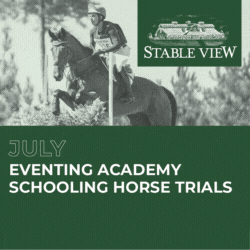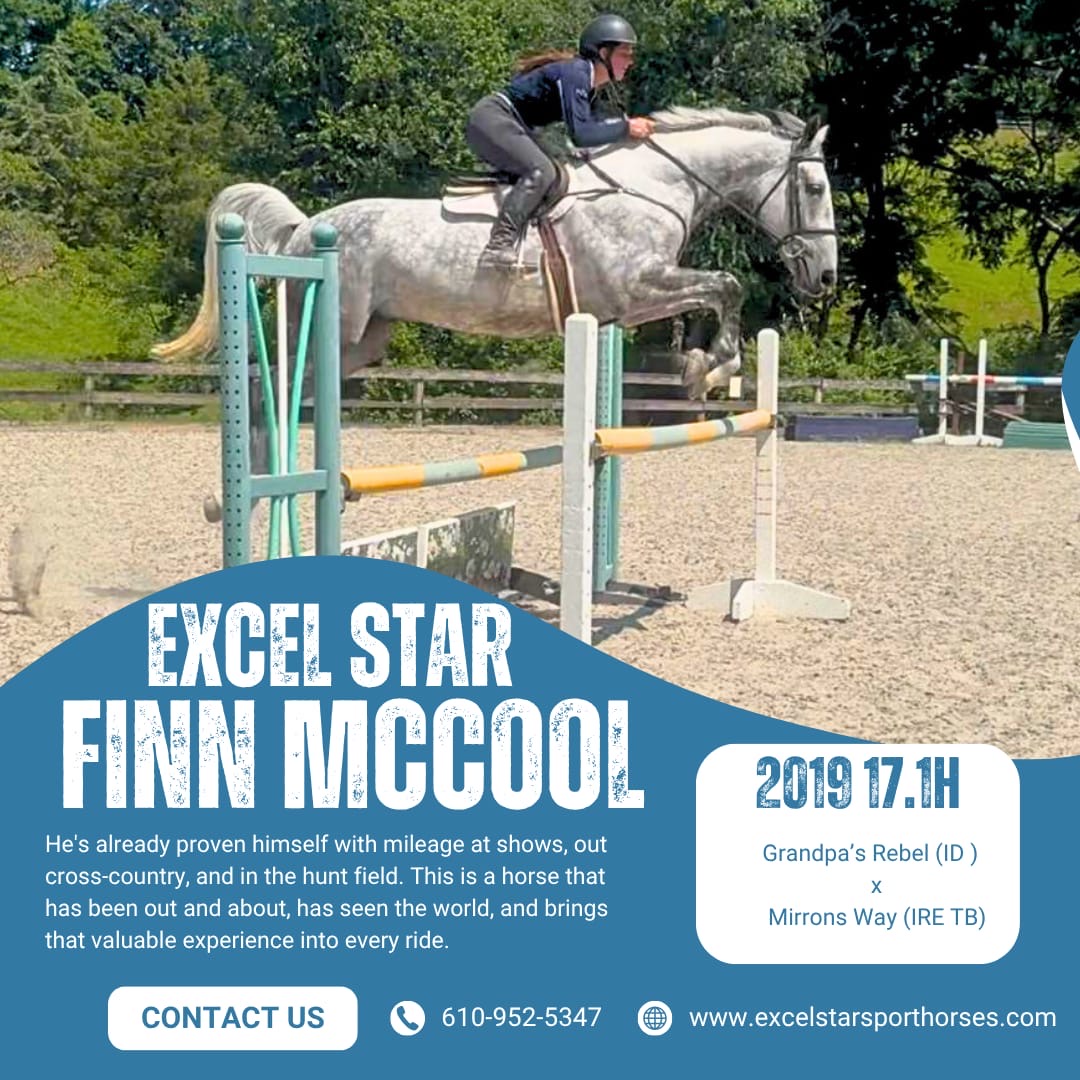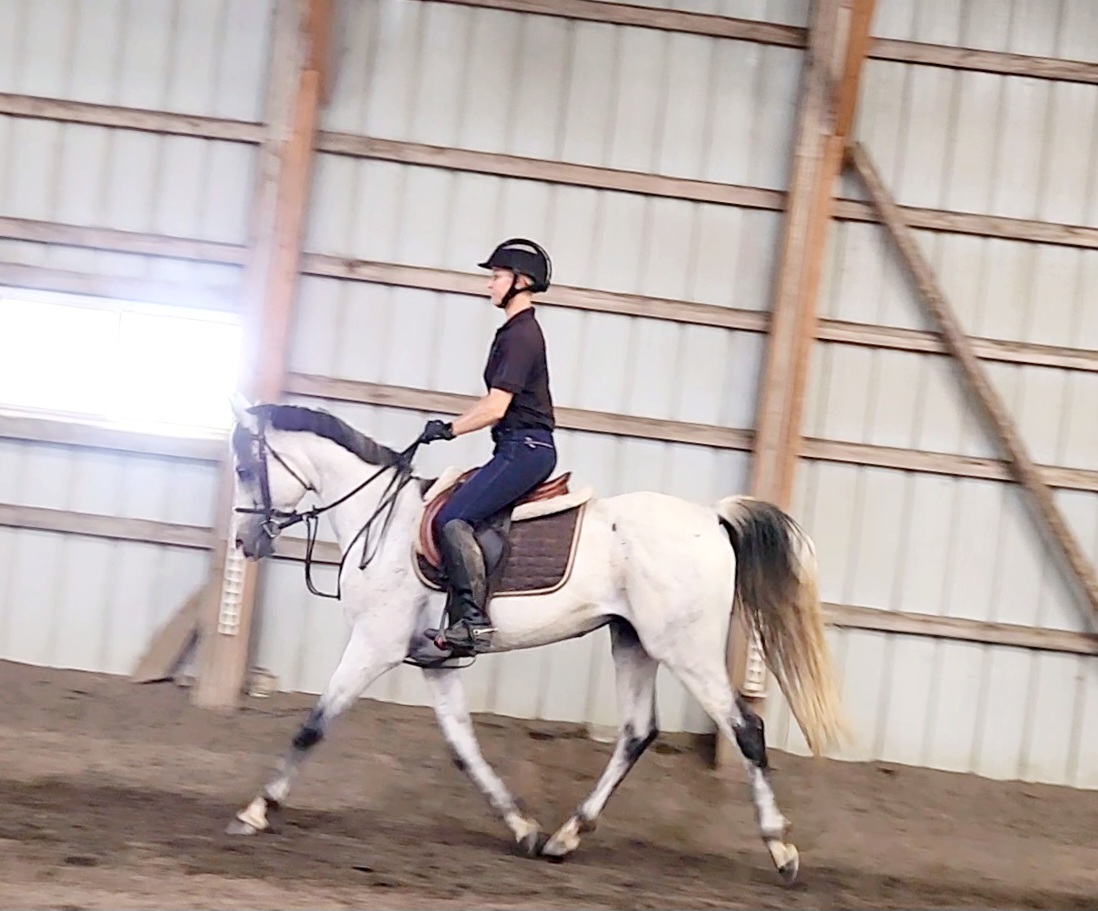We recently polled our readers to find out their burning questions about dressage, and now we’ve enlisted Amelia Newcomb‘s help to answer them! Do you have a question for Amelia? Email us at [email protected] and you could see your question addressed right here on EN!

Photo courtesy of Amelia Newcomb Dressage.
Q: How do I fix my feet sticking out like a penguin when I ride? Related to that, I really struggle with keeping my heels down.
Great questions! Don’t worry, you aren’t alone! These are common things I see in many riders! There could be a few reasons why your toes are pointing out, either you’re built that way, you tend to walk that way, or you are nagging your horse!
To get your toes pointing forward, think about rotating your thigh inward from your hip. I commonly see riders trying to fix their leg position by rotating their toes in from the ankle, but this doesn’t work, because their leg is still turned out and their toes just go right back to pointing out no matter how hard they try to fix it! Rotating inward from your hip will help you fix your whole leg position. Check in with your leg position each time you walk, and rotate your thighs in again if you need to! Pretty soon, you’ll train your body to ride in the correct position with your toes forward.
Next, to help you get your heels down, there are several things that will help you:
- Find the correct stirrup length. When you drop your stirrups, your ankle bone should be right at the length of your stirrups. Stirrups that are too long or too short will impede your ability to maintain the correct leg position.
- Make sure your calves and ankles are loose. I recommend stretching your calves and ankles before riding.
- Be sure that your stirrup is perpendicular to your foot! Heels should be a few inches lower than the toe and the stirrup should be perpendicular to your foot for maximum stability and control.
- Activate your leg properly. If you find that you can’t put your leg on without your heels coming up, then you might not be activating the correct muscles. It’s super important that when you give a leg aid, you do so from your hip (glute med muscle). This allows you to put your leg on and keep your heels down.
Your leg position still isn’t right? Getting the correct position statically might be easy, but dynamically is a whole different story? If this is the case, check in with your horse and make sure that they are in front of your leg. If you are constantly working to get your horse to go, it will be impossible to fix your leg position. And remember, fixing old habits takes time. Be mindful and consistent about taking walk breaks and fixing your position and I know you will be able to correct this.
I hope that this helps you! Check out my free Rider Position Webinar for more tips to help you with your rider position.
About Amelia Newcomb:
Amelia Newcomb is a USDF Gold medalist and recipient of the Carol Lavell Prize from the Dressage Foundation. Based in Somis, CA, she incorporates complete dressage training from starting the young horse through the FEI levels.
Amelia works to develop a trusting and confident relationship between horse and rider. Her approach incorporates all aspects of horsemanship from basic groundwork to advanced dressage movements. The emphasis is always on the foundation with the basic trust, understanding, and relaxation for both horse and rider to create a harmonious partnership.
Amelia’s mantra has always been “Dressage for All,” which is evident in both her in person and online coaching. With a successful YouTube video library of hundreds of free educational videos, over 290,000 subscribers (and counting!), and thousands of students enrolled in her online USDF-accredited courses, it is clear that Amelia has a passion for teaching and dressage.
“I have been blessed with many great teachers in my career and I hope to help each and every one of my students develop a connection and solid relationship with their horses.”
Learn more about Amelia on her website (www.amelianewcombdressage.com) or discover her free educational videos on her YouTube channel, Amelia Newcomb Dressage.























